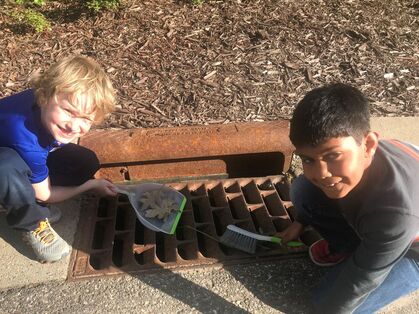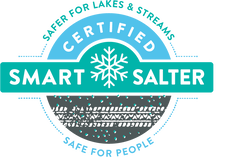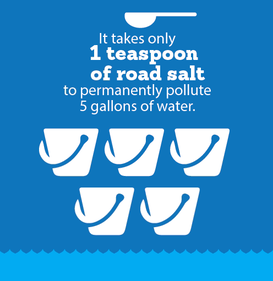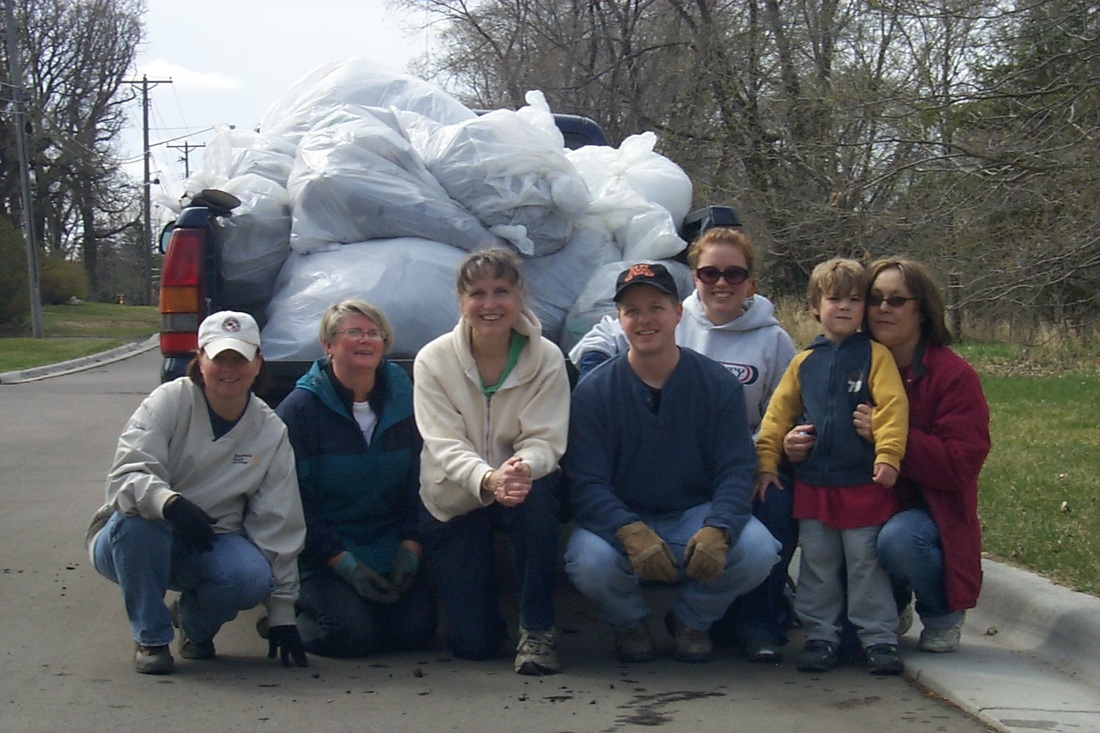WMWA's "Ten Things You Can Do" Brochure shows what families can do to protect and improve local water quality.
- Salt Sparingly
- Keeps streets clear of grass clippings and leaves to prevent algae
- Kick the Chemicals
- Mow high
- Scoop the poop
- Adopt a storm drain
- Capture Rainwater
- Replace turfgrass with native plants
- Un-pave the way - reduce impervious surfaces, increase permeable surfaces without pavement or with pervious pavement
- Conserve Water. See also EPA WaterSense education.
WMWA's Watershed Friendly Guidebook for Commercial Properties
Information and guidance for property managers and homeowners associations interested in reducing impacts on lakes and streams and improving water quality.
Minneapolis Salt Mini-Course
Learn how to reduce chloride impacts in your neighborhood.
Information and guidance for property managers and homeowners associations interested in reducing impacts on lakes and streams and improving water quality.
Minneapolis Salt Mini-Course
Learn how to reduce chloride impacts in your neighborhood.
|
Salt Smart
For over 50 years, Minnesota's de-icing salt has made roads, sidewalks, parking lots and other paved surfaces less slippery. Unfortunately, de-icing salt does not break down in the environment, does not flush away easily, and is nearly impossible to remove. Most de-icing salt stays in waterways near its application. As de-icing practices increase with new development, Twin Cities' waterways are increasingly at risk for chloride impairment. High levels of chloride harm native vegetation and wildlife, and can impair ecological services such as lake turn over in Spring and Autumn. More on lake turn over here. Minnesota PCA's Smart Salter certification program trains salt applicators and property managers about alternative ways to keep people safe while reducing or eliminating the use of de-icing salt. Minnesota PCA has a draft state-wide Chloride Management Plan and resource list to address this challenge for our surface and ground waters. For a list of training opportunities, visit the training provider, Fortin Consulting. Non-profit groups, such as Stop Over Salting (SOS), send master water stewards to community meetings and events to raise awareness of the challenge, and safe, effective alternatives. To request an educator to visit your meeting or to volunteer, contact Stop Over Salting via email: [email protected]. |
|
Beware Aquatic Invasive Species! Spread the word!
Invasives destroy local ecosystems. They're easily spread accidentally. They need expensive long-term management once introduced. Clean In, Clean Out Clean your watercraft. Drain all water, Dispose unused bait. Protect MN waters by following state aquatic invasive species laws. For example: 20 days dry or pressure wash. No plant fragments, Etc. Report suspected new infestations to DNR. Contact your specialist. Volunteer for an AIS detection training with the U's Minnesota Aquatic Invasive Species Research Center (MAISRC). AIS dectectors help DNR and other agencies find new infestations and keep an eye on management of existing AIS. Reach out to fellow water recreation participants to help them understand and respect AIS rules. AIS are usually not fully removable once introduced. They require expensive long-term management once they are introduced. |
|
Lawns to Legumes Program
Assistance and grants available for residents! This program aims to protect the federally endangered state bee, the Rusty Patched Bumblebee, and other pollinators. Even small plantings of native flowers build and connect habitat corridors that help pollinators. |
Blue Thumb coordinates the “Individual Support” portion of this program with cost-share funding (grants up to $350 per resident), workshops, landowner coaching, and site visits. The MN Board of Water and Soil Resources (BWSR) is the lead agency for the lawns to legumes program, and also offers neighborhood grants. BWSR also has a pollinator toolbox designed for professionals, and residents may find their plant and seed selector useful. |
|
Volunteer to Monitor Water Quality
Local watersheds need volunteers to monitor local lakes, streams and wetlands. Watersheds partner with: - Hennepin County for the Wetland Health Evaluation Program (WHEP) and the - Stream Health Evaluation Program (SHEP), and with - Metropolitan Council for the Citizen Assisted Monitoring Program (CAMP) for lakes. If you are interested, please complete the contact form and note in the comments that you are interested in volunteering. High School students can also volunteer through their school as part of the RiverWatch Program sponsored by Hennepin County. State-wide opportunites available at MN PCA's website. |
|
Volunteer to become a Master Water Steward
The Master Water Steward program educates and certifies volunteers to be community leaders in protecting and improving water quality in local waterways. The program is a partnership between Freshwater and participating cities, counties, watershed management organizations and non-profits (see a list of participating organizations here). |
Minnesota Water Stewards
Minnesota Water Stewards is a program that certifies and supports community leaders to prevent water pollution and educate community members to conserve and protect our waterways. The program is a partnership between Freshwater and participating cities, counties, watershed management organizations and non-profits (see a list of participating organizations here).
Wherever you live, you can make a real difference in the health of our waters.
Info Sessions - Minnesota Water Stewards
Come learn what it takes to become a Water Steward! Along with submitting an application, all program applicants need to attend an information session.
minnesotawaterstewards.org
Applications are due by November 20
Minnesota Water Stewards is a program that certifies and supports community leaders to prevent water pollution and educate community members to conserve and protect our waterways. The program is a partnership between Freshwater and participating cities, counties, watershed management organizations and non-profits (see a list of participating organizations here).
Wherever you live, you can make a real difference in the health of our waters.
Info Sessions - Minnesota Water Stewards
Come learn what it takes to become a Water Steward! Along with submitting an application, all program applicants need to attend an information session.
minnesotawaterstewards.org
Applications are due by November 20
|
Native Plant Gardens
Native plants:
Pollinators are responsible for pollinating 1/3 of the food we eat. |
Visit Blue Thumb's Plant Finder to see what plants will grow well in your garden, yard or shoreline To find native plants for purchase, visit MN DNR's list of nurseries, suppliers, and landscapers for Central Minnesota. This list also includes services that can remove invasive species. Video "How Nature Makes Clean Water" 4-minute video by The Nature Conservancy shows how nature filters water. |
|
Participate in Clean-up Events
Cities, parks, schools, and community groups regularly host events to: - plant native plants - remove invasive species - collect litter - remove organics such as leaves - and more! Check with your city's volunteer coordinator and community event organizer pages for upcoming events. WMWA keeps a list of events we are aware of here. |
|
Volunteer for Storm Drain Marking
Volunteer with your city to mark storm drains in to remind the community that only rain should go down these drains. This is a great project for Scouts, church groups, and other community groups. Contact your city's water manager for spray paint stencils and to coordinate on which storm drains to mark. |
Proudly powered by Weebly













